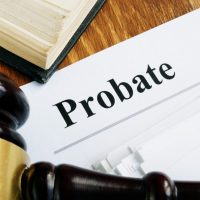Transfer on Death and Payable on Death Clauses: A Simple Way to Keep Assets Out of Probate

Your will specifies who you want to inherit each of your assets after you are gone, but following the instructions in your will is only one part of the probate process. In fact, your family members, lifelong friends, or favorite charitable causes will only receive their share of your estate after probate is finished, and the amount that is left for them at the end could be a lot less than you were hoping to leave for them. During probate, creditors and the IRS get first dibs on your estate; only after they have claimed their share do your loved ones get their inheritance. The art and science of keeping your wealth out of probate is one of the main focuses of estate planning, and a Central Florida estate planning lawyer can help you do it successfully.
The Beauty of TOD and POD Provisions
When you fly from Dubai to Tampa, but change planes in Atlanta, you tell the agent at the ticket counter in Dubai that you are going to Tampa. When you get to Atlanta, you just catch your connecting flight, without having to give instructions to anyone in the airport. When your bags get to Atlanta, the airport employees just read the tags that say to send them to Tampa, and they follow the instructions. Transfer on Death (TOD) and Payable on Death (POD) provisions work similarly. In general, the term payable on death applies to bank accounts, such as checking accounts, savings accounts, and certificates of deposit (CDs), while transfer on death is the term used for investment accounts.
To make your account payable on death, simply notify the bank of the name of your chosen beneficiary. Ownership of the account will automatically pass to the beneficiary when you die; the account will not be counted as part of your estate subject to probate. You can make an account POD when you open it; you can also add a POD beneficiary to an account you have already opened. In fact, you have the flexibility to add, remove, or change POD beneficiaries of your bank accounts as often as you choose, as long as the court has not declared you legally incapacitated because of your ill health.
If you and your spouse own the account jointly, the surviving spouse automatically becomes the sole owner of the account when the first spouse dies. If you name another family member as the POD beneficiary, he or she inherits the account after both of the original owners die. Making a bank account POD and naming a beneficiary is as simple as making a visit to your neighborhood bank where you already have an account.
Contact an Attorney Today for Help
Not all aspects of estate planning are as simple as making a bank account POD; some things require the help of an experienced estate planning lawyer. Contact Tampa estate planning attorney David Toback ƒor a consultation on your case.
https://www.davidtobacklaw.com/introduction-to-probate-and-estate-law-vocabulary/



